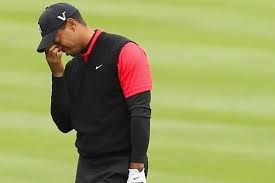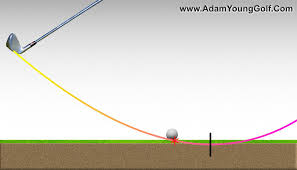Anyone who hopes to master the game of golf needs to approach the game with reasonable expectations. There is no such thing as a natural golfer. Understanding swing path and the resulting shape and distance that you can achieve with each club is a great starting point. Learning from a mentor who can recognize your weaknesses and fine tune your swing to improve distance and direction control is definitely an advantage. Anyone can become a “good” golfer but you need to follow some basic principles.
Consider what some outstanding professional golfers have done:
Tiger Woods: He learned the basics from his father but he also had the internal drive to be successful. Unfortunately that drive and attitude got derailed during his marriage break up. That confirms that our metal state of mind has a lot to do with our success.
Dustin Johnson: His strength and skill went sideways with drugs but he is now back on track.
Matt Kuchar: Age must be a factor. Matt was very successful in his earlier years, lost the winning formula and then won the Sony Open in 2019 even with his aging body at 41. [We all remember Tom Watson almost winning the 2009 Open at the age of 59.] Limit your expectations as you age. Work on accuracy as you lose distance.
Bubba Watson: He has never taken a lesson and is totally self-taught. He is one of the longest drivers but direction control and focus for all of his clubs seem to have ended his winning ways. Control your draw or fade to control your success.
Others like Phil Michelson, Jim Furyk, Rory McIlroy and Jordon Spieth have had their ups and downs with their long and short golf careers. So how can we apply their successes to our games? As weekend warriors or want-to-be golfers, what should we do to get the best out of our games?
Mental Attitude: Every mishit ball is a frustration for every golfer. Recognizing the cause is a critical starting point. You need to turn your attitude around by attacking your weaknesses. Start by taking lessons, practicing on the range and calming your mind and body. Learn that a wonderful drive or iron shot will NOT improve by swinging harder and faster.
Physical Conditioning: This is typically a problem as we age and lose our flexibility. Spend time daily to improve your basic strength and range of motion. Strained muscles can help your game by forcing you to slow down or limit your motion. Use your recovery period as a learning experience because your game will often improve when you slow down to improve your lag and get more control & distance for each shot.
Focus and Apply What Works For YOU: After a long slump, Jordon Spieth recently discovered that he needed to create a slight loop at the top of his swing to SHALLOW his club in the downswing (keeping his trailing elbow closer to his rib cage). Swinging from the inside and impacting the inside quadrant of the ball has turned his game around. It may help you too.

Keep a record of what works for Your Game to control distance and direction for your driver, irons and putter. Refine those points as your confidence improves and your scores will drop. Practicing with GOLFSTR+ will help you overcome your swing flaws. Buy one today at www.GOLFSTR.com
Golf Truism #46: No matter how far its shaft extends, a ball retriever is always a foot too short to reach the ball.












